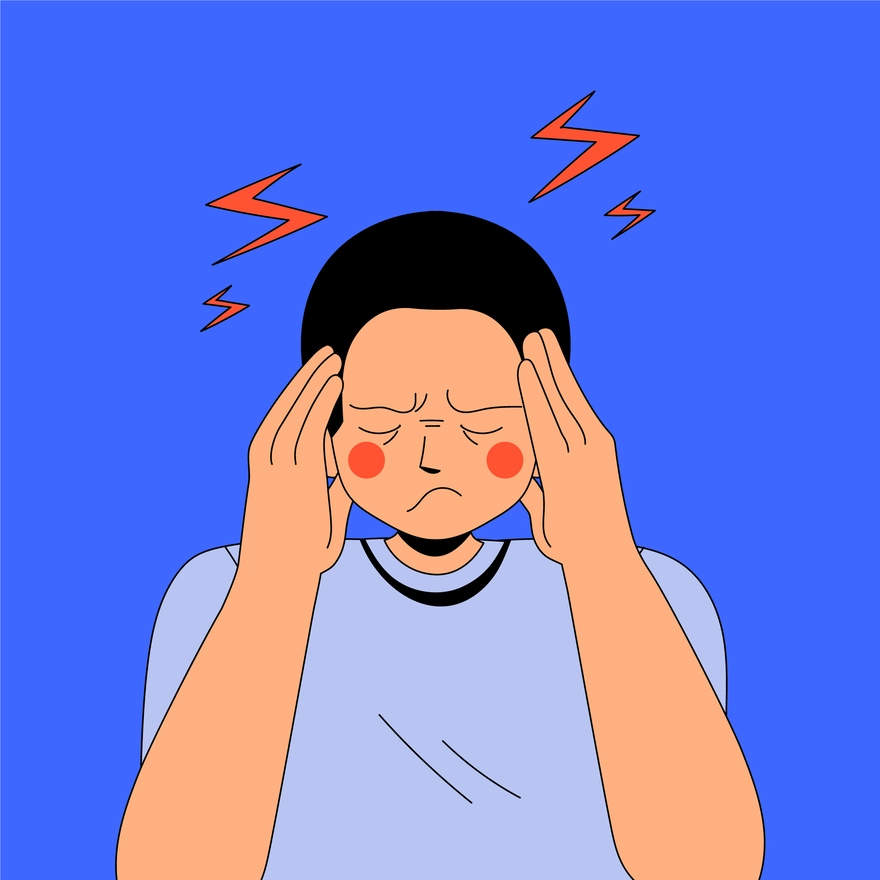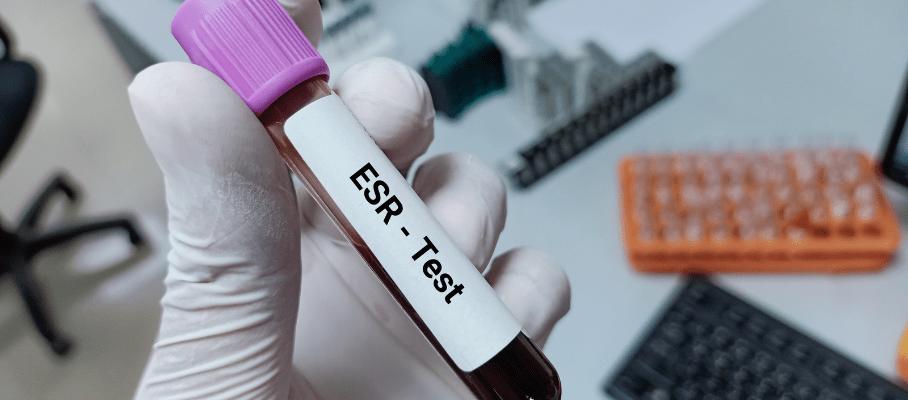Preventive Healthcare
Thunderclap Headaches: Symptoms, Treatment, and More
54 Views
0

What are thunderclap headaches?
A thunderclap headache is an extremely severe headache that reaches peak intensity within 60 seconds and lasts for at least five minutes. The thunderclap headache meaning refers to its sudden, explosive onset, often described as the worst headache a person has ever experienced. Thunderclap headaches typically affects both sides of the head and may be accompanied by symptoms such as nausea, vomiting, neck stiffness, confusion, or sensitivity to light.
While about 75% of thunderclap headaches have benign causes, 25% result from serious conditions like subarachnoid hemorrhage, stroke, or brain aneurysm. These headaches can occur at any age but are most common in people between 20 and 50 years old. Because of their sudden and intense nature, every thunderclap headache requires urgent medical evaluation to rule out life-threatening causes. If you experience one, seek emergency care immediately, as early intervention can be lifesaving.
Symptoms of Thunderclap Headaches
Imagine carrying on with your daily activities when, out of nowhere, you are struck by an intense headache. The pain is so severe it feels like your head might burst, forcing you to stop what you're doing and sit down. This is the experience of a thunderclap headache.
This type of headache can be alarming due to its intensity and rapid onset.
Key thunderclap headache symptoms include:
- Rapid Onset: The pain reaches its peak within 60 seconds, often likened to a sudden and intense "explosive" sensation.
- Severe Pain: Described as the worst headache a person has ever experienced, often feeling like a blow to the head or intense pressure inside the skull.
- Pain Location: The headache can affect both sides of the head or be localized to one area, but it is generally intense across the entire head.
Additional symptoms can accompany the thunderclap headache, which may indicate a more serious underlying issue:
- Nausea and Vomiting: The intensity of the pain often leads to stomach upset.
- Neck Stiffness: A common thunderclap headache symptom that may suggest meningitis or another serious condition.
- Photophobia: Sensitivity to light, making it difficult to be around bright environments.
- Blurred or Double Vision: Visual disturbances can accompany the headache.
- Brief Loss of Consciousness: Fainting or feeling lightheaded can occur in some cases.
Causes and Risk Factors
Thunderclap headaches are often a sign of a serious underlying condition. Here are some of the most common thunderclap headache causes:
- Subarachnoid hemorrhage (SAH): This is bleeding into the space around the brain, often due to a ruptured aneurysm. It's the most common cause of thunderclap headaches.
- Cerebral venous sinus thrombosis (CVST): This is a blood clot in the brain's venous sinuses.
- Reversible cerebral vasoconstriction syndrome (RCVS): This condition causes the blood vessels in the brain to constrict temporarily. It can be triggered by certain medications, illicit drugs, or even pregnancy.
- Meningitis: This is an infection of the protective membranes covering the brain and spinal cord that can cause a thunderclap headache.
- Pituitary apoplexy: This is bleeding or loss of blood supply to the pituitary gland.
Certain factors can increase your risk of developing a thunderclap headache, including:
- High blood pressure
- Smoking
- Use of illicit drugs, especially cocaine and amphetamines
- A history of migraines
Research shows that between 11% and 25% of individuals who visit the emergency room with a thunderclap headache are diagnosed with a subarachnoid hemorrhage. This underscores the importance of seeking immediate medical evaluation to rule out potentially life-threatening conditions.
When to Seek Immediate Medical Attention
If you experience a sudden, severe headache that reaches peak intensity within a minute, seek emergency medical care right away, as it could be a thunderclap headache. Other warning signs of thunderclap headache that necessitate immediate attention include:
- A headache accompanied by fever, stiff neck, confusion, or vision changes
- A headache following a head injury
- A headache with severe nausea and vomiting
- A headache that's different from your usual headaches
Your healthcare provider will likely recommend imaging tests such as a CT scan or MRI to determine the underlying cause. A lumbar puncture (spinal tap) may also be performed to check for bleeding in the brain.
Prompt diagnosis and treatment for thunderclap headaches are essential. For example, in the case of a subarachnoid hemorrhage, immediate surgery may be needed to clip the aneurysm and stop the bleeding. Delays in treatment can lead to brain damage or even death.
Diagnosis of Thunderclap Headaches
Diagnosing a thunderclap headache requires urgent evaluation to rule out life-threatening conditions. The process includes several critical steps:
- Medical History: Your doctor will ask about the sudden onset, severity, and any accompanying symptoms like nausea or vision changes.
- Neurological Exam: A thorough assessment of vision, speech, reflexes, sensation, and muscle strength helps evaluate brain function.
- Brain Imaging: A CT scan is typically the first test to detect bleeding, aneurysms, or abnormalities. If results are inconclusive, an MRI or MRA may follow.
- Lumbar Puncture: If a CT scan is normal but suspicion remains high, a lumbar puncture checks for blood in cerebrospinal fluid, indicating a possible subarachnoid hemorrhage.
- Additional Tests: Angiography may be used to examine blood vessels for aneurysms or blockages.
The goal is to quickly identify and treat any life-threatening conditions, ensuring prompt medical intervention to prevent thunderclap headache complications.
Treatment Options for Thunderclap Headaches
Thunderclap headaches are intense, sudden-onset headaches that can signal serious underlying conditions. If you're wondering how to stop a thunderclap headache, the answer lies in identifying and treating the root cause rather than just managing the pain.
Thunderclap headache treatment depends on the specific condition triggering the headache:
- Subarachnoid hemorrhage: This life-threatening condition requires emergency neurosurgical intervention to stop bleeding and repair the damaged blood vessel.
- Blood clots: Treatment may involve anticoagulant medications or procedures to dissolve or remove the clot, depending on its location and severity.
- Cervical artery dissections: Often managed with antiplatelet or anticoagulant drugs to prevent further complications.
- Meningitis and encephalitis: Require immediate treatment with intravenous antibiotics or antiviral medications to control the infection and prevent severe neurological damage.
- Reversible Cerebral Vasoconstriction Syndrome (RCVS): Sometimes resolves on its own, but medications may be necessary to alleviate vasoconstriction and reduce the risk of further complications.
Understanding thunderclap headache causes is critical because these headaches often indicate serious medical emergencies. Immediate medical evaluation is essential, as pain relief alone is insufficient and may delay a life-saving diagnosis. Properly addressing the underlying cause is the key to effective treatment, reducing risks, and ensuring long-term well-being.
Prevention and Management Tips
Preventing thunderclap headaches involves managing underlying risk factors and seeking immediate medical attention if symptoms occur. While not all cases can be prevented, certain strategies may help reduce the risk of thunderclap headaches:
- Control Blood Pressure: High blood pressure increases the risk of conditions like subarachnoid hemorrhage and RCVS, both of which can trigger thunderclap headaches.
- Stay Hydrated: Dehydration can contribute to headaches and vascular issues.
- Avoid Triggers: Some cases of RCVS are linked to stimulant use, certain medications, or extreme physical exertion. Identifying and avoiding personal triggers can help.
- Treat Infections Promptly: Meningitis and encephalitis can cause thunderclap headaches, so early treatment is crucial.
- Regular Medical Checkups: Monitoring for vascular conditions or clotting disorders may prevent complications.
Seek emergency care immediately when a thunderclap headache occurs. Do not rely on pain medication alone, as timely diagnosis and treatment are essential for preventing life-threatening complications.
Conclusion and Key Takeaways
Thunderclap headaches are a medical emergency requiring prompt attention due to their association with potentially life-threatening conditions. Early diagnosis and treatment can significantly improve outcomes. Remember these key points:
- Seek immediate medical care for any sudden, severe headache peaking within 60 seconds
- Thunderclap headache causes include subarachnoid hemorrhage, blood vessel problems, and RCVS
- Diagnostic tests may include CT scan, MRI, and lumbar puncture
- Thunderclap headache treatment focuses on addressing the underlying cause
- Maintain good cardiovascular health to indirectly support prevention
If you experience a thunderclap headache, don't hesitate to seek emergency medical attention. For routine health monitoring, consider Metropolis Healthcare's at-home blood test and health check-up services. With a team of qualified technicians, advanced diagnostic labs, and convenient online reports, Metropolis Healthcare delivers reliable results and personalised care to empower you in prioritising your well-being.























 WhatsApp
WhatsApp